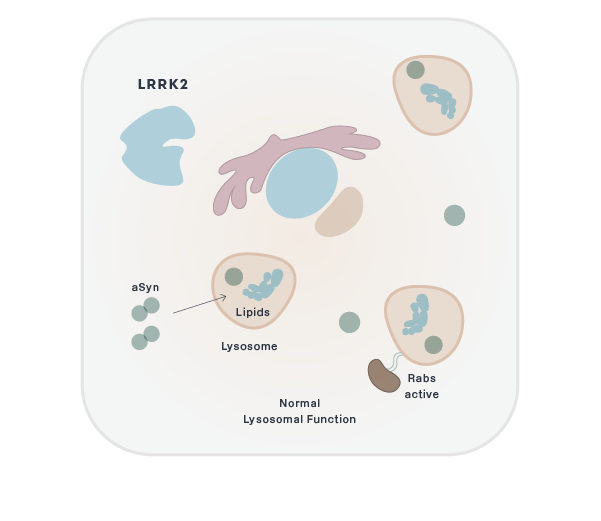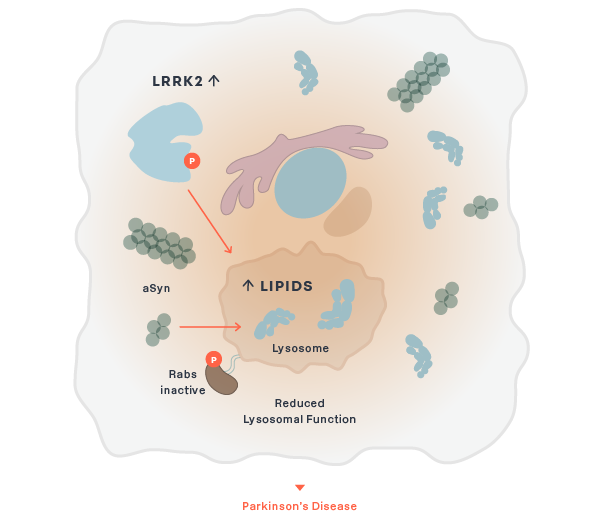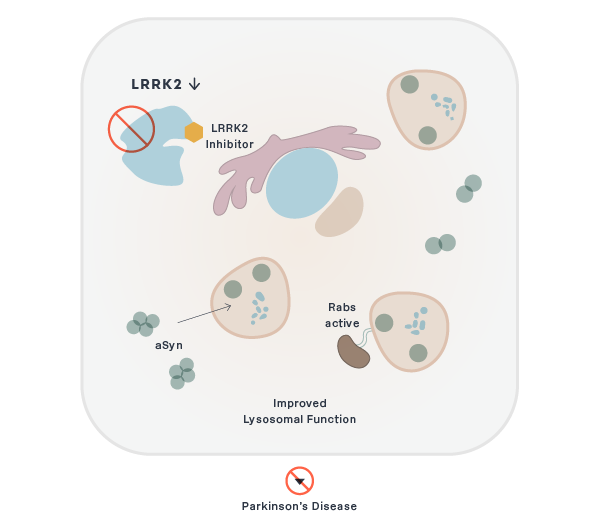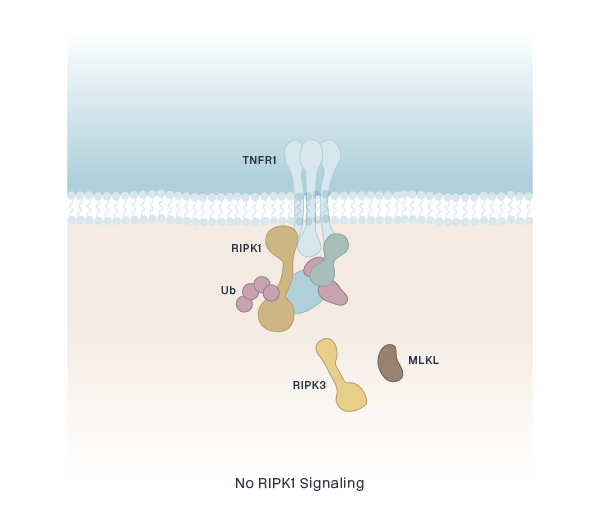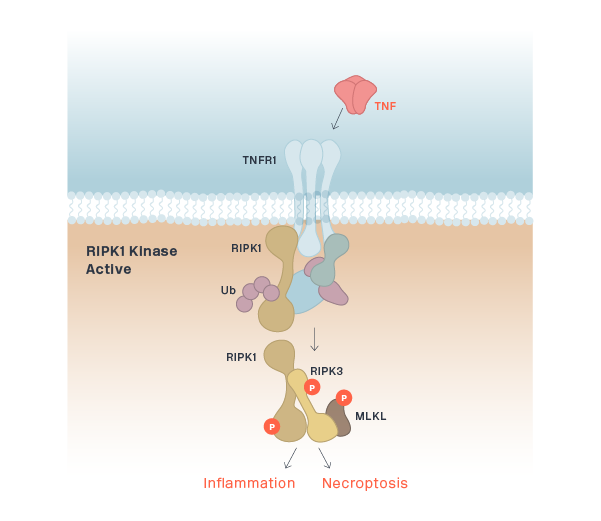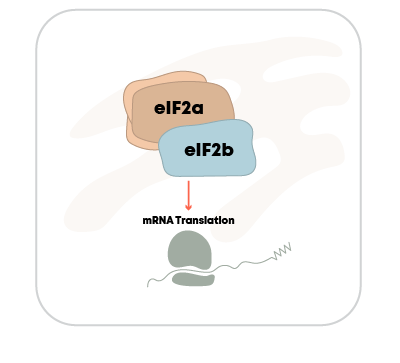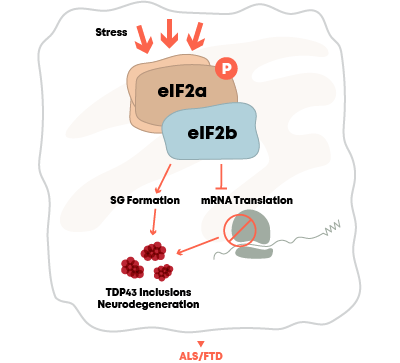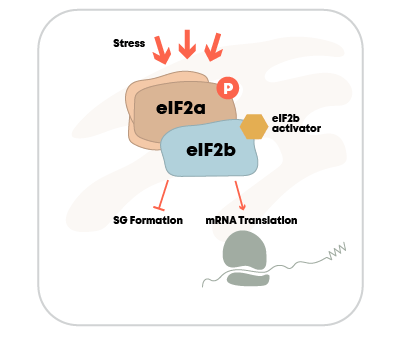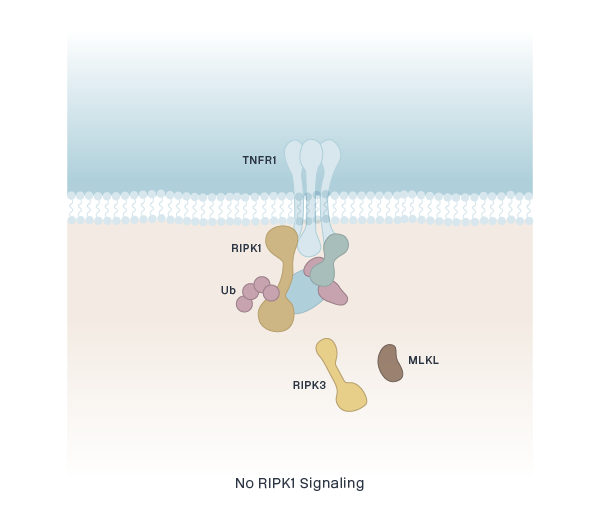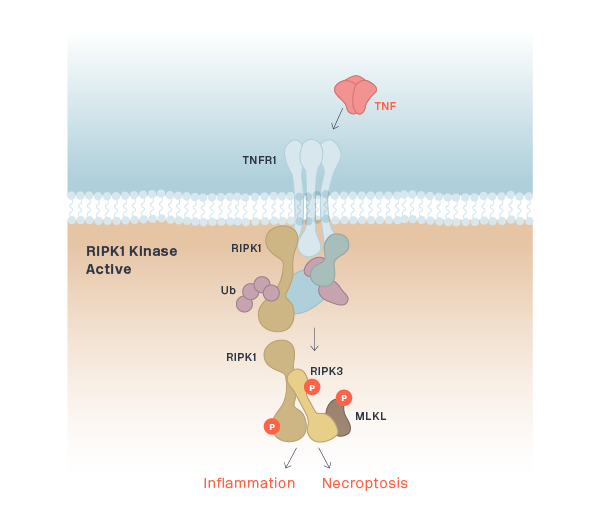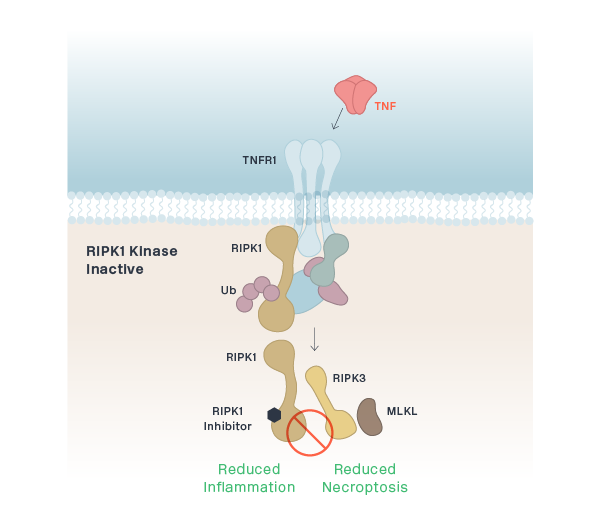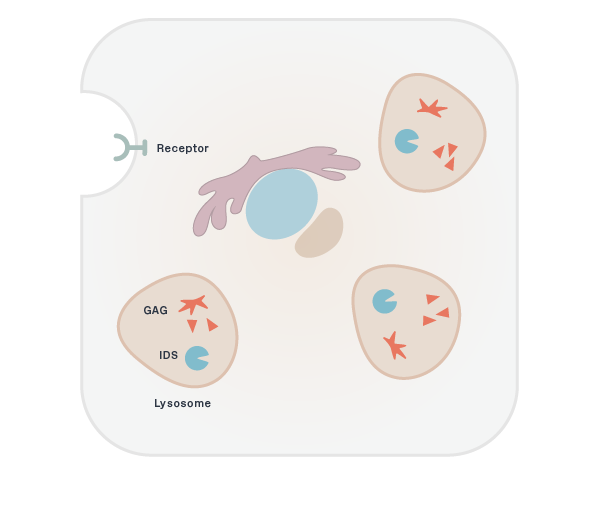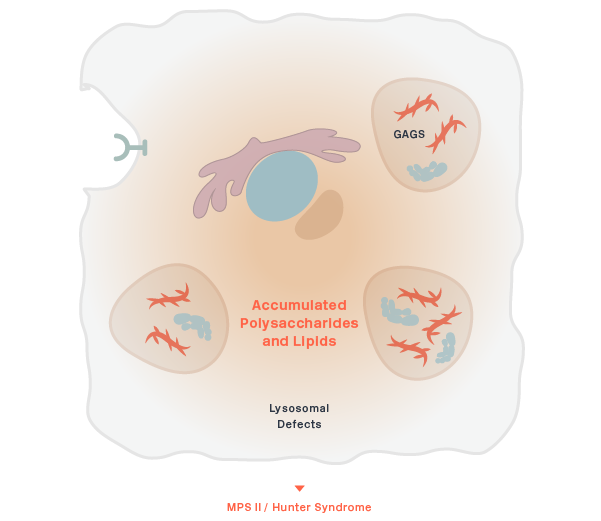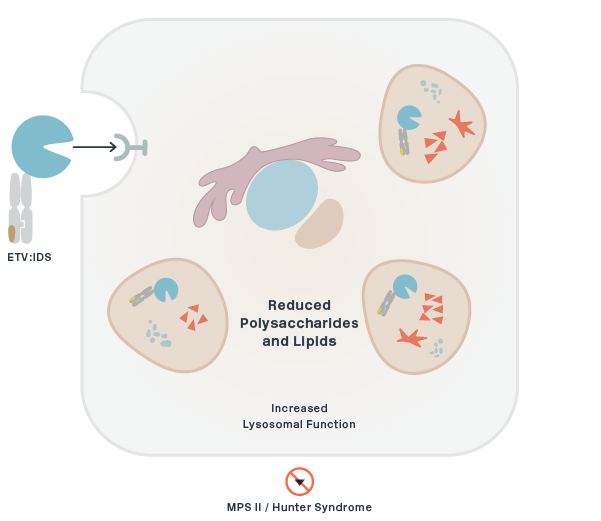Engineering Brain Delivery
The human brain contains approximately 400 miles of blood vessels. These blood vessels are lined by closely linked endothelial cells to form the Blood-Brain Barrier (BBB), which protects the brain from toxins by regulating the transfer of proteins, nutrients and waste products. Delivering therapeutics across the BBB has been a major obstacle to successful drug development in neurodegeneration, and is critical to enabling effective treatments.

Small Molecules
ENGINEERING AND DESIGN
Delivery of small molecule therapeutics to the brain has been challenging as most small molecule drugs are actively excluded by efflux pumps. It has been estimated that approximately 98% of small molecule drugs do not cross the BBB.
We are focused on engineering small molecule therapeutics that achieve exposure levels in the brain sufficient to bind to protein targets and drive a therapeutic effect. Efficacious orally administered small-molecule medicines for brain diseases must be readily absorbed from the gut into the blood and penetrate the BBB while avoiding transporter-mediated efflux. Our small molecule drug discovery scientists have many years of experience designing small molecules for brain diseases
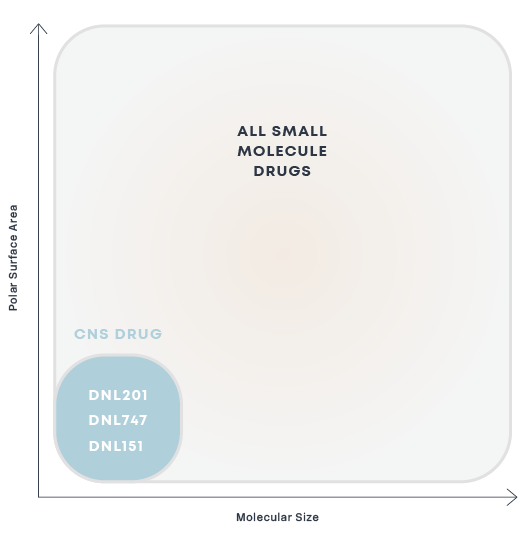
Overview
For small molecules, we follow a rigorous approach in designing these molecules to cross the Blood-Brain Barrier.
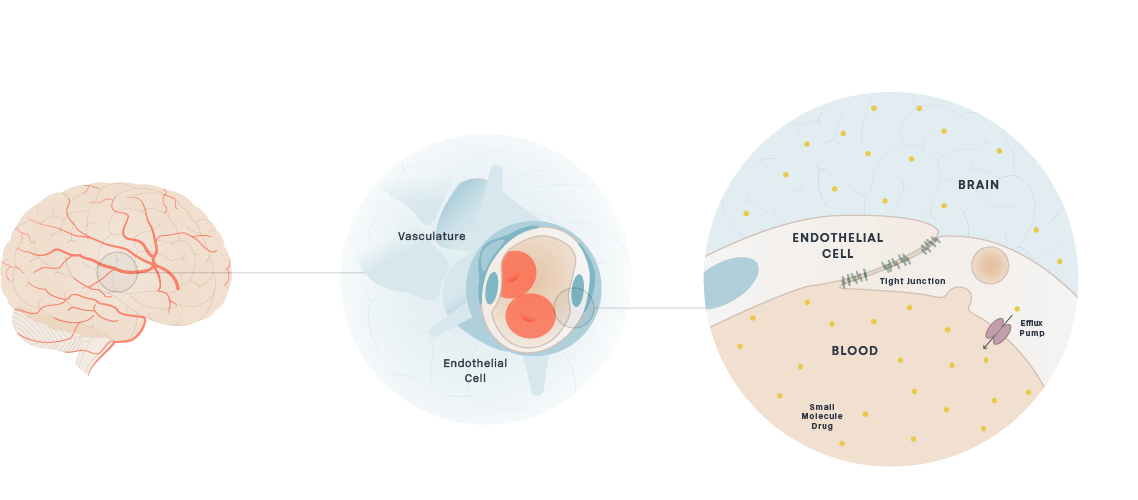
Drug Candidates
Crohn's Disease
DNL975 (LRRK2 Peripheral)
Program Target
LRRK2
Development Stage
Drug Discovery
ALS Parkinson's
CH1
Program Target
Undisclosed
Development Stage
Drug Discovery
ALS
GB1
Program Target
Undisclosed
Development Stage
Drug Discovery
Parkinson's
DNL151
Program Target
LRRK2
Development Stage
Early Clinical
ALS Alzheimer's MS
DNL788
Program Target
RIPK1
Development Stage
Early Clinical
ALS FTD
DNL343
Program Target
EIF2B
Development Stage
Early Clinical
Cutaneous Lupus Erythematosus (CLE) COVID-19
DNL758
Program Target
RIPK1
Development Stage
Early Clinical
Large Molecules
Transport Vehicle Platform Technology
Brain uptake of therapeutic antibodies and recombinant enzymes is severely limited by their size. For example, the concentration of most therapeutic antibodies in the brain is only 0.1% of the concentration in the blood. We are developing proprietary platform technologies to actively transport these molecules across the BBB through receptor-mediated transcytosis (RMT). RMT through the BBB is the process by which macromolecules in the blood bind to receptors on the endothelial cells that make up the BBB and are actively transported and released into the brain.
Our large molecule transport vehicle (TV), platform technology engineers BBB receptor binding into an Fc domain. We have selected transferrin receptor (TfR), which is a highly-expressed BBB receptor that we believe has the ability to substantially improve brain uptake of therapeutic molecules. This construct can be integrated and fused to therapeutic molecules as described below, without disrupting the binding of transferrin to TfR.
Overview
For small molecules, we follow a rigorous approach in designing these molecules to cross the Blood-Brain Barrier.
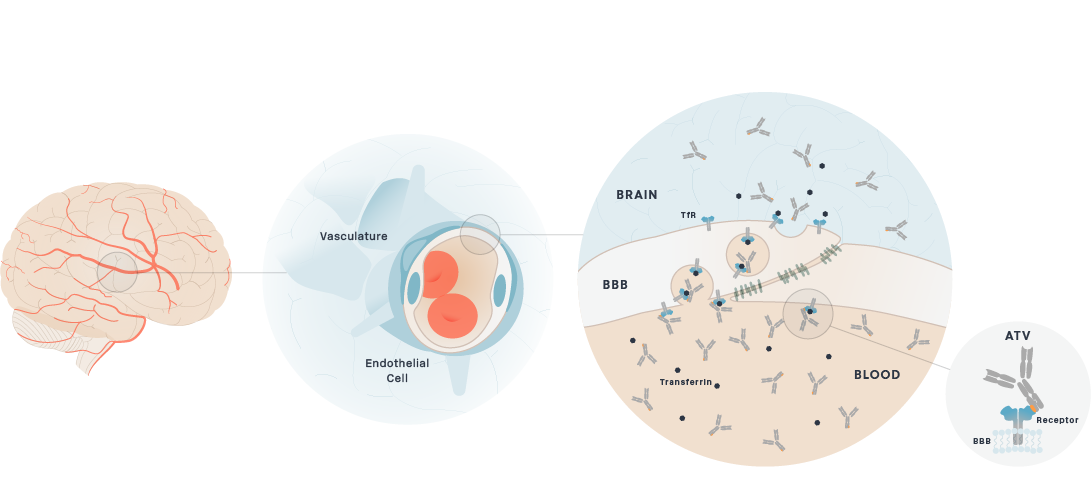
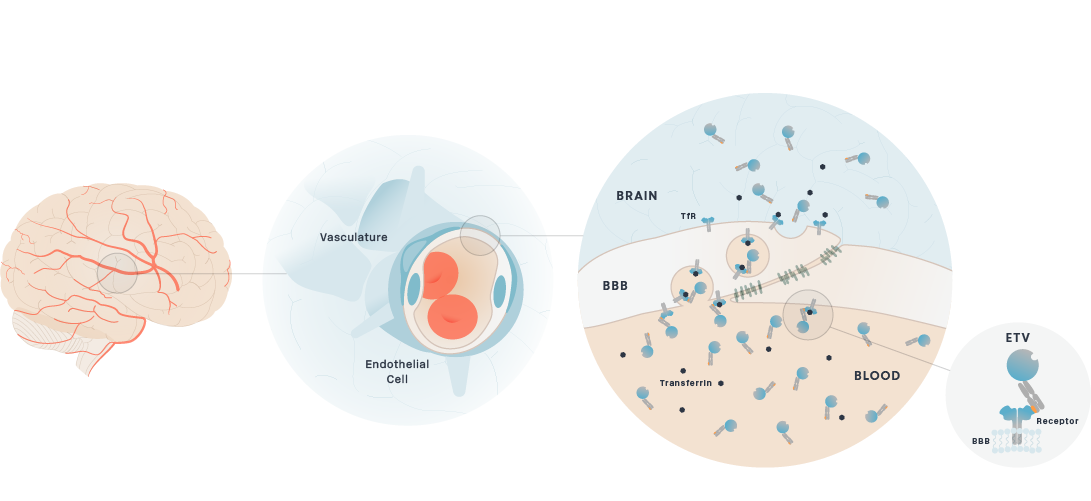
Drug Candidates
Alzheimer's
ATV:Abeta
Program Target
Abeta
Development Stage
Drug Discovery
Parkinson's
AAV:LF2
Program Target
Undisclosed
Development Stage
Drug Discovery
Oncology
ATV:HER2
Program Target
HER2
Development Stage
Drug Discovery
Parkinson's, Gaucher disease
ETV:GCase
Program Target
GCase
Development Stage
Drug Discovery
MPS IIIA (Sanfilippo Syndrome)
DNL126 (ETV:SGSH)
Program Target
Sulfamidase
Development Stage
IND-Enabling
MPS II (Hunter Syndrome)
DNL310 (ETV:IDS)
Program Target
Iduronate 2-sulfatase
Development Stage
Early Clinical
Parkinson's DLB MSA
ATV:aSyn
Program Target
Alpha-Synuclein
Development Stage
Drug Discovery
Frontotemporal Dementia
DNL593 (PTV:PGRN)
Program Target
Progranulin
Development Stage
IND-Enabling
Alzheimer's
DNL919 (ATV:TREM2)
Program Target
TREM2
Development Stage
IND-Enabling
Alzheimer's
ATV:Tau
Program Target
Tau
Development Stage
Drug Discovery
